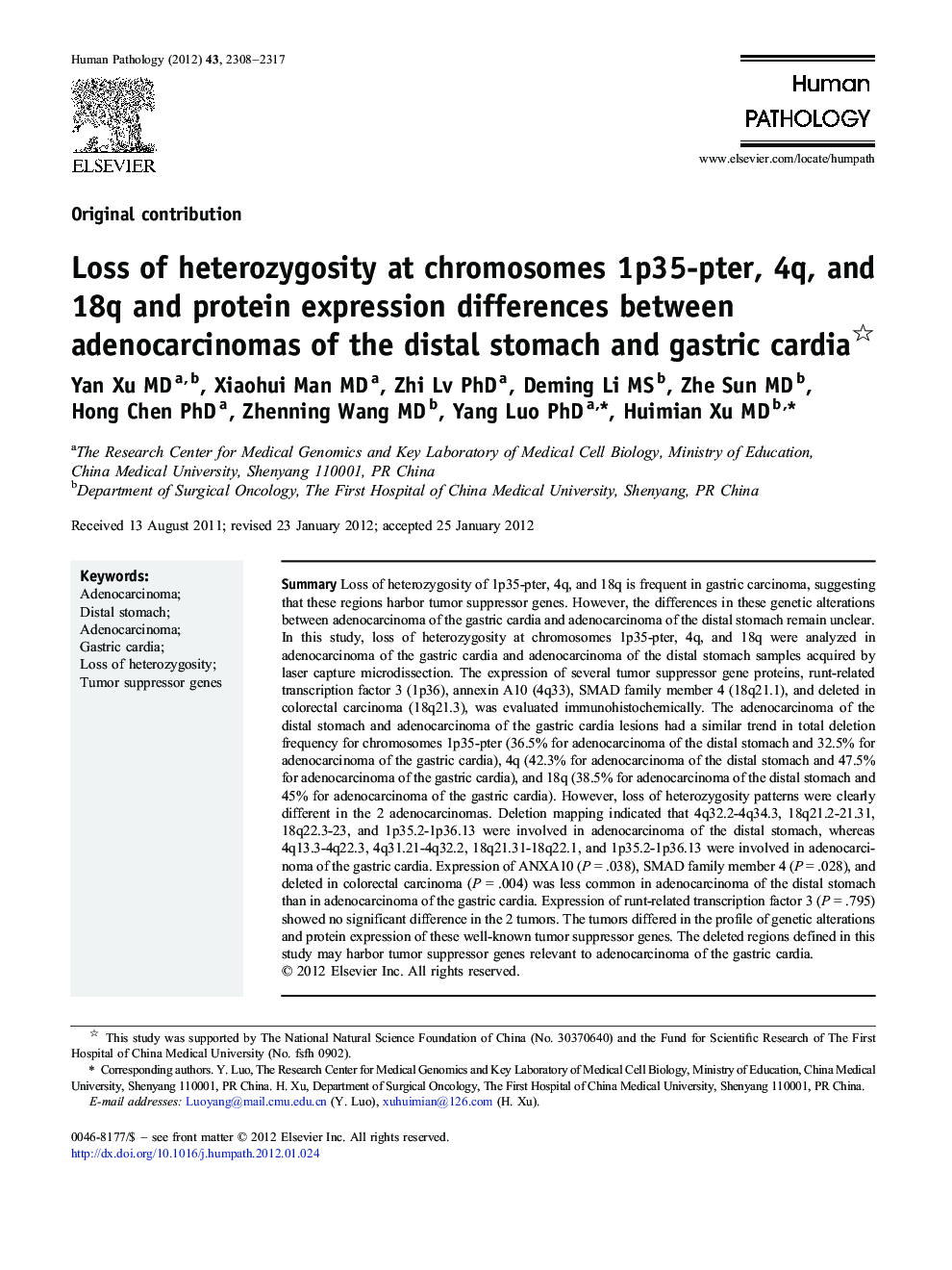| Article ID | Journal | Published Year | Pages | File Type |
|---|---|---|---|---|
| 4133725 | Human Pathology | 2012 | 10 Pages |
SummaryLoss of heterozygosity of 1p35-pter, 4q, and 18q is frequent in gastric carcinoma, suggesting that these regions harbor tumor suppressor genes. However, the differences in these genetic alterations between adenocarcinoma of the gastric cardia and adenocarcinoma of the distal stomach remain unclear. In this study, loss of heterozygosity at chromosomes 1p35-pter, 4q, and 18q were analyzed in adenocarcinoma of the gastric cardia and adenocarcinoma of the distal stomach samples acquired by laser capture microdissection. The expression of several tumor suppressor gene proteins, runt-related transcription factor 3 (1p36), annexin A10 (4q33), SMAD family member 4 (18q21.1), and deleted in colorectal carcinoma (18q21.3), was evaluated immunohistochemically. The adenocarcinoma of the distal stomach and adenocarcinoma of the gastric cardia lesions had a similar trend in total deletion frequency for chromosomes 1p35-pter (36.5% for adenocarcinoma of the distal stomach and 32.5% for adenocarcinoma of the gastric cardia), 4q (42.3% for adenocarcinoma of the distal stomach and 47.5% for adenocarcinoma of the gastric cardia), and 18q (38.5% for adenocarcinoma of the distal stomach and 45% for adenocarcinoma of the gastric cardia). However, loss of heterozygosity patterns were clearly different in the 2 adenocarcinomas. Deletion mapping indicated that 4q32.2-4q34.3, 18q21.2-21.31, 18q22.3-23, and 1p35.2-1p36.13 were involved in adenocarcinoma of the distal stomach, whereas 4q13.3-4q22.3, 4q31.21-4q32.2, 18q21.31-18q22.1, and 1p35.2-1p36.13 were involved in adenocarcinoma of the gastric cardia. Expression of ANXA10 (P = .038), SMAD family member 4 (P = .028), and deleted in colorectal carcinoma (P = .004) was less common in adenocarcinoma of the distal stomach than in adenocarcinoma of the gastric cardia. Expression of runt-related transcription factor 3 (P = .795) showed no significant difference in the 2 tumors. The tumors differed in the profile of genetic alterations and protein expression of these well-known tumor suppressor genes. The deleted regions defined in this study may harbor tumor suppressor genes relevant to adenocarcinoma of the gastric cardia.
